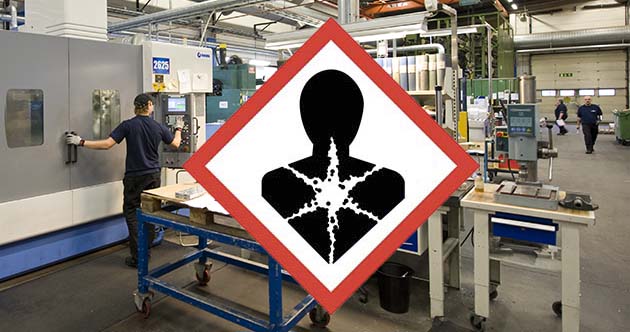EU has published their decision after evaluating the first 3 of totally 11 formaldehyde releaser used in metal processing. All three are classified as carcinogenic and strict restrictions await companies that continue to use them.
After 1 December 2018, the following substances are classified as carcinogenic, according to the EU Commission's 10th ATP to CLP:
- N, N'-methyleneebismorpholine, also known as MBM, CAS 5625-90-1
- 3,3'-methylene bis [5-methyloxazolidine], also known as MBO, CAS 66204-44-2
- Α, α ', α''-trimethyl-1,3,5-triazine-1,3,5 (2H, 4H, 6H) -triethanol, also known as HPT, CAS 25254-50-6
Whether formaldehyde-releasing biocides can cause cancer has been evaluated for a long time and by many bodies within the EU. The decision now taken by the REACH Committee is in line with the recommendation issued by the ECHA Risk Assessment Committee (RAC) in December 2015, with the new addition that mixtures containing these substances should only be classified as carcinogenic if the total theoretically releasable amount of formaldehyde in a mixture exceeds 0.1%.
Since the classification largely derives from the release of formaldehyde, there is good reason to believe that the remaining eight formaldehyde releasers will also be classified as carcinogenic.
How does it affect me?
Now is the time to read the list of contents for your chemicals. Carcinogenic substances and products may not be used if it’s technically possible to replace them. If any of the three substances listed above are in a product you use, you must try to replace them with another product without these substances or change your process so that the product does not need to be used.
It is not advisable to try to replace it with another formaldehyde-releasing biocidal product because they are likely to receive the same classification soon. Even isothiazolines get tougher classifications, read more in my previous blog post.
Register requirements
If you continue to use a product with these formaldehyde releasers, an investigation must be made indicating that the product cannot be replaced. If the investigation shows that there are no other options, the following requirements must be met:
- The product should be handled in a closed system, if it’s technically possible.
- There should be written handling and protection instructions for the entire handling eller process chain.
- Depending on how concentrated the product is in use, pipelines and tanks may also need to be labeled with the symbol "health hazard", as well as the name of the product and that it can cause cancer.
- The employer shall also keep a register of workers exposed to the substance. The register must be kept for at least 40 years after exposure has ceased. The register shall contain:
- Employee Name
- Work tasks
- Chemical hazard source to which the employee has been exposed
- Measured or estimated degree of exposure
Chemicals legislation in the EU
Changes within the chemicals legislation are affecting the metalworking industry a lot right now. With our e-book, you can keep up to date. (CS)



Comment